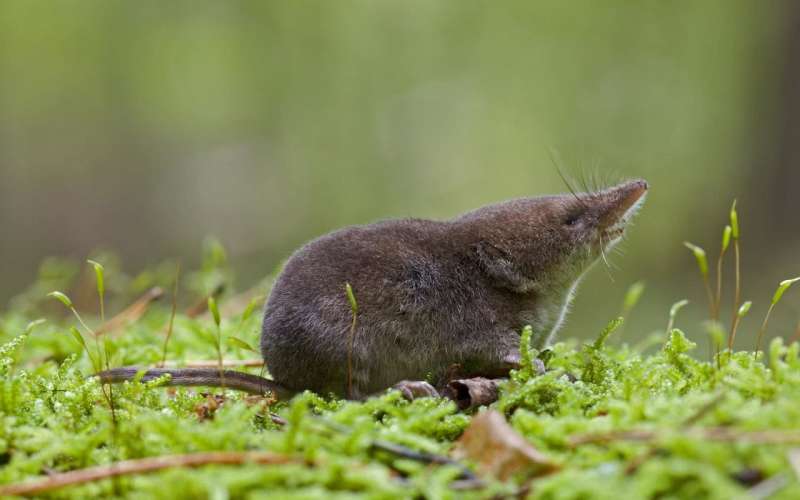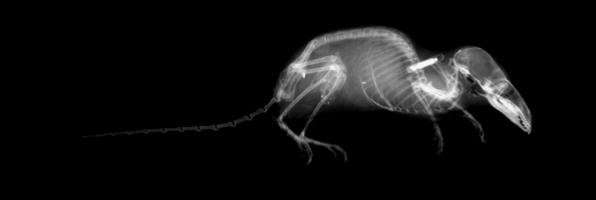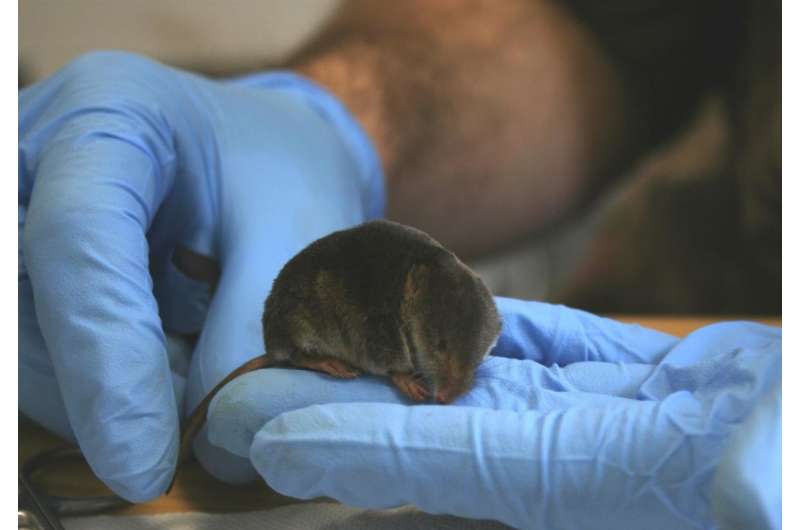These shrews have heads that shrink with the season

If any part of the body would seem ill equipped to shrink, it would probably be the head and skull. And, yet, researchers reporting in Current Biology on October 23 have found that the skulls of red-toothed shrews do shrink in anticipation of winter, by up to 20 percent. As spring approaches, their heads grow again to approach their previous size.
"We found that each shrew undergoes a dramatic decrease in braincase size from summer to winter," says Javier Lazaro of Max Planck Institute for Ornithology in Germany. "Then, in spring, the braincase regrows, almost reaching the original size in the second summer."
Earlier studies had suggested that the heads of these shrews might shrink seasonally. At the population level, the height of the braincase of shrews was shown to decline by 20 percent and then to increase again by 15 percent. There's even a name for it based on the first person to report the general observation: the Dehnel phenomenon. But the new study is the first to fully document the shrews' shrunken heads by following individual animals over the course of the seasons.
The researchers used live traps to capture shrews from the summer of 2014 into the fall of 2015. When a shrew was captured, the researchers anesthetized it before X-raying its skull and implanting a microchip under its skin for later identification.
Measurements taken using the X-rays confirmed that the shrews' heads shrunk over the course of the season. Twelve shrews were captured at all three stages, and all of them showed the same pattern: a peak head size in summer, a winter decline, and regrowth in the spring.

Lazaro says that at the moment, they "know very little regarding the causes." The reduction in size affects not only the skull, but also the shrews' entire body: in winter, several major organs lose mass, the spine gets shorter, and even the brain mass decreases by 20 or 30 percent.
Shrews have high metabolisms, and it's likely that the decline in size helps them to live through times of food scarcity. Unlike other animals, shrews don't migrate or hibernate for the winter.
"Reducing head size—and thus brain size—might save energy disproportionally as the brain is energetically so expensive," Lazaro says.
How can a skull actually shrink? The process isn't fully understood, but there's evidence suggesting that the braincase shrinks as tissue within cranial sutures is resorbed. As spring approaches, the bone tissue regenerates.

The researchers were surprised at the magnitude of the change in head size within individuals. While it had been suggested in earlier studies, they thought that perhaps those seasonal changes could be explained in part by a tendency of larger individuals to die. But, the new study found no evidence of that, they say.
"This means every single individual undergoes this change every winter, which remains baffling to us," Lázaro says.
The researchers plan to further investigate structural change in the brain as the shrews' heads shrink. They are also curious to know how this process affects the animals' cognitive abilities.
More information: Current Biology (2017). DOI: 10.1016/j.cub.2017.08.055
Journal information: Current Biology
Provided by Cell Press


















